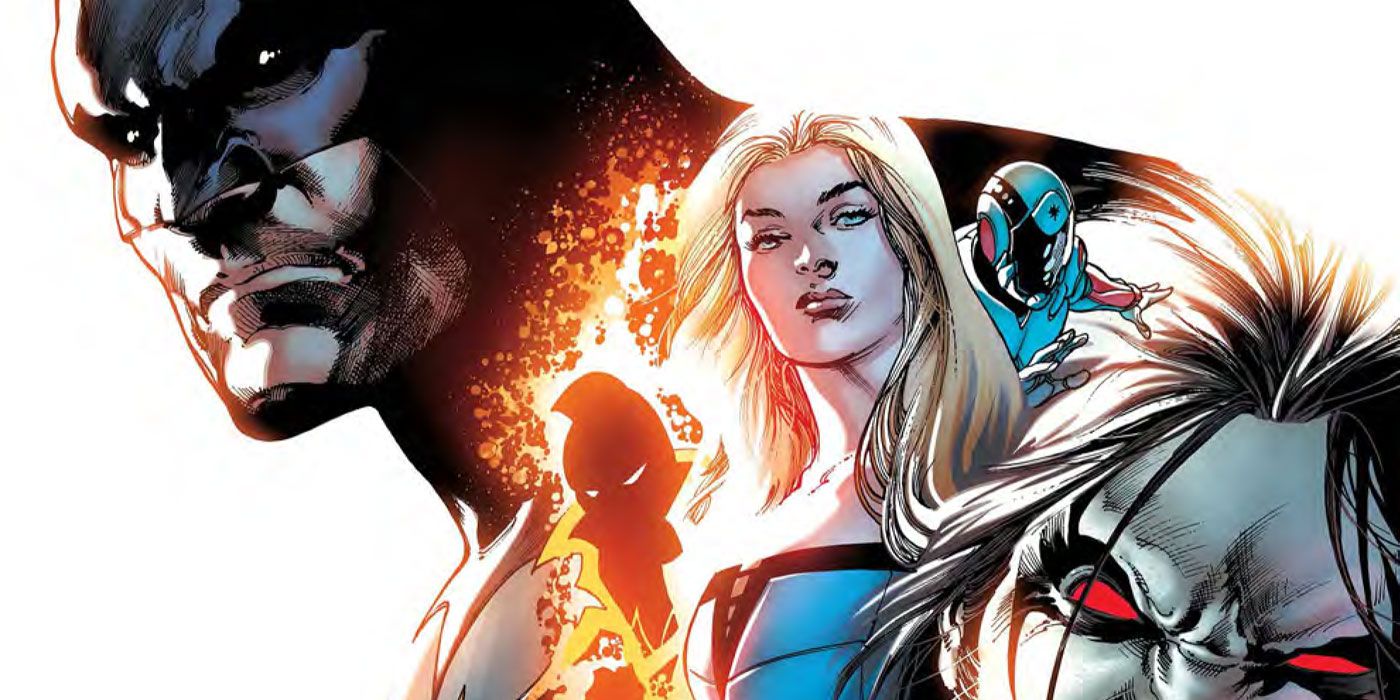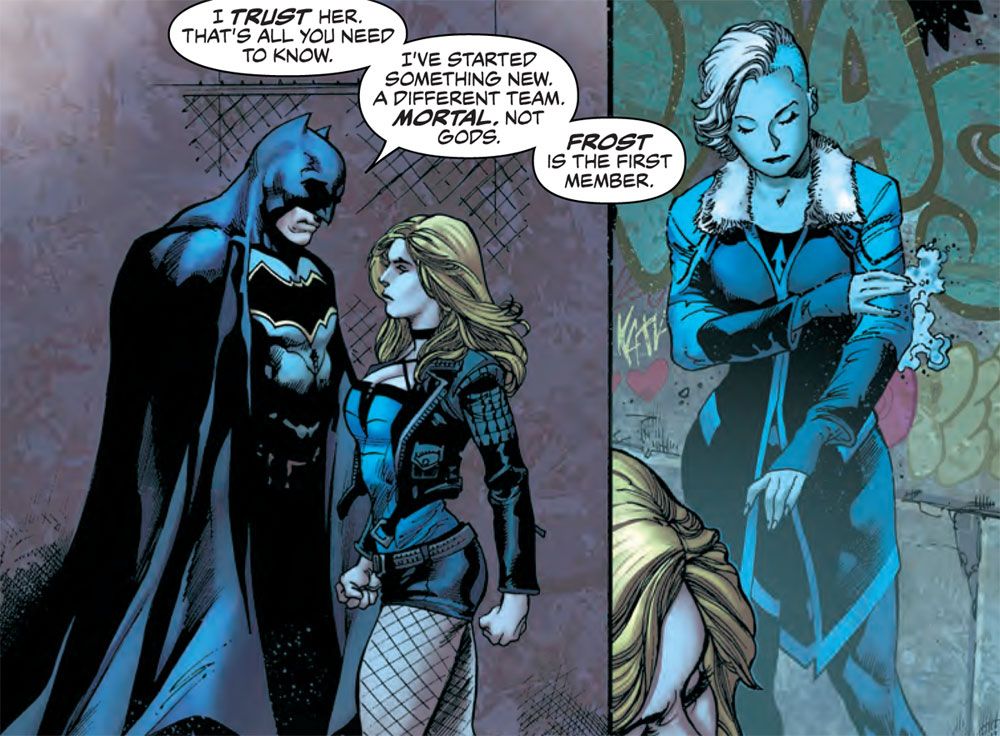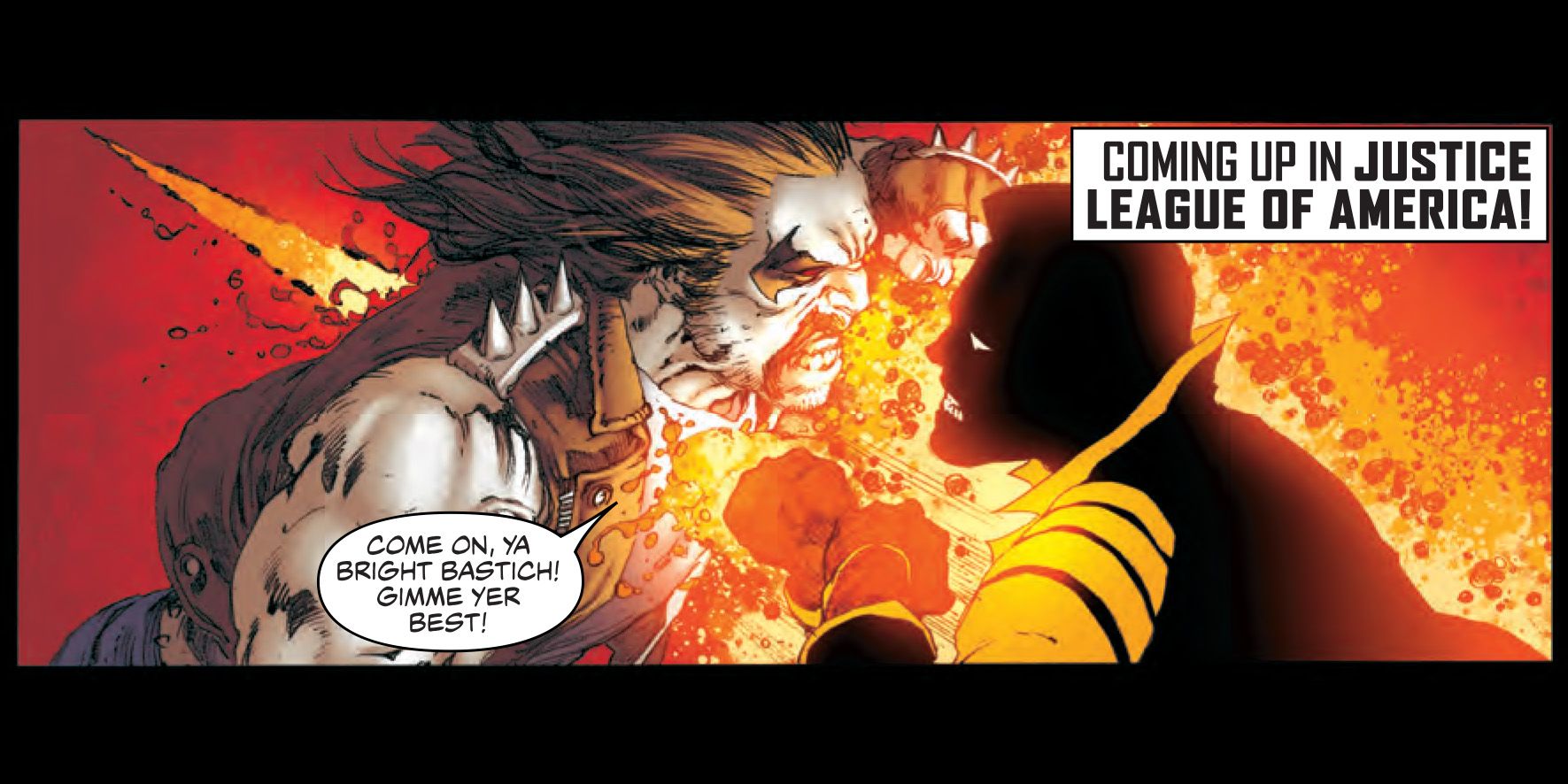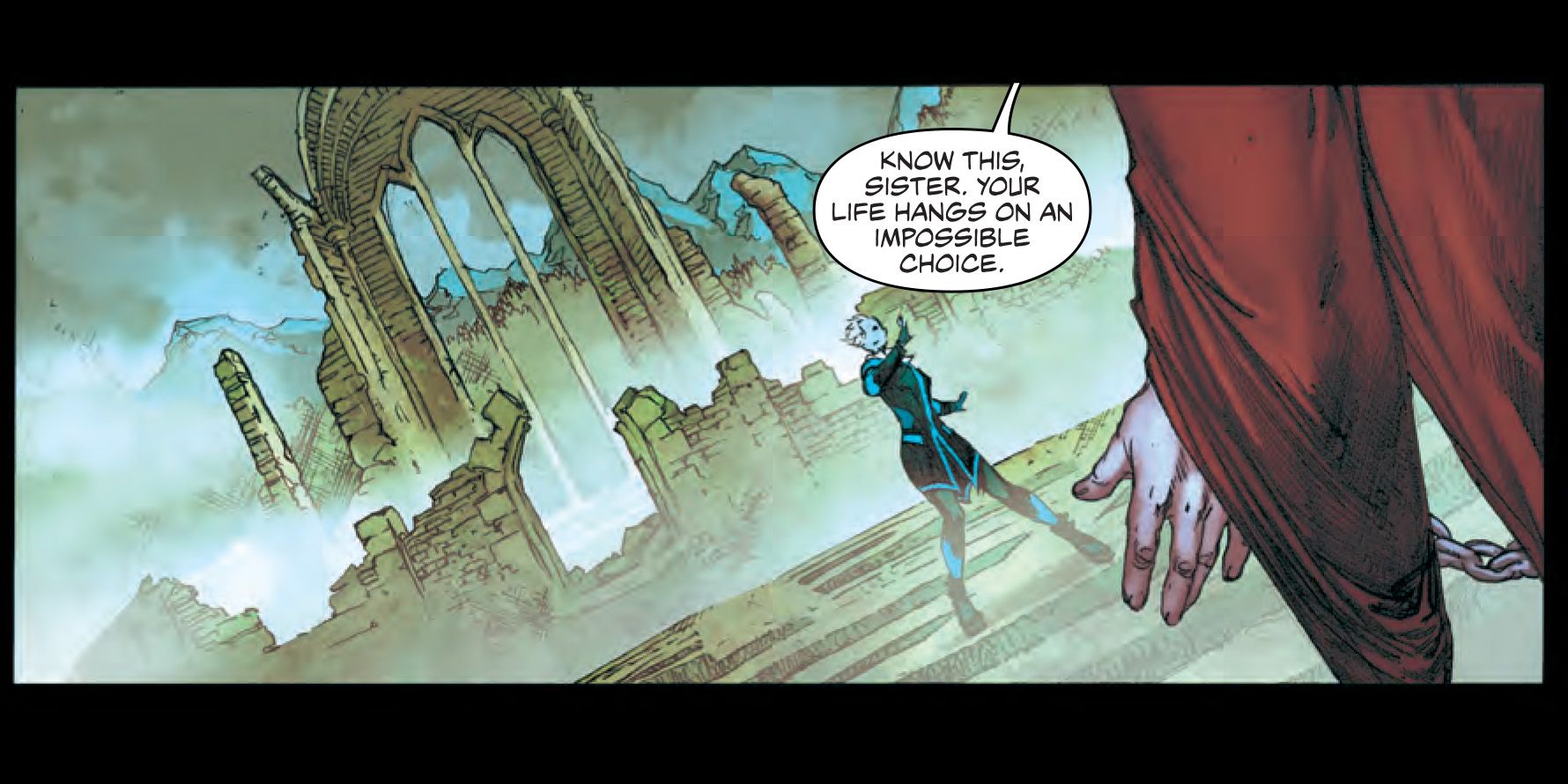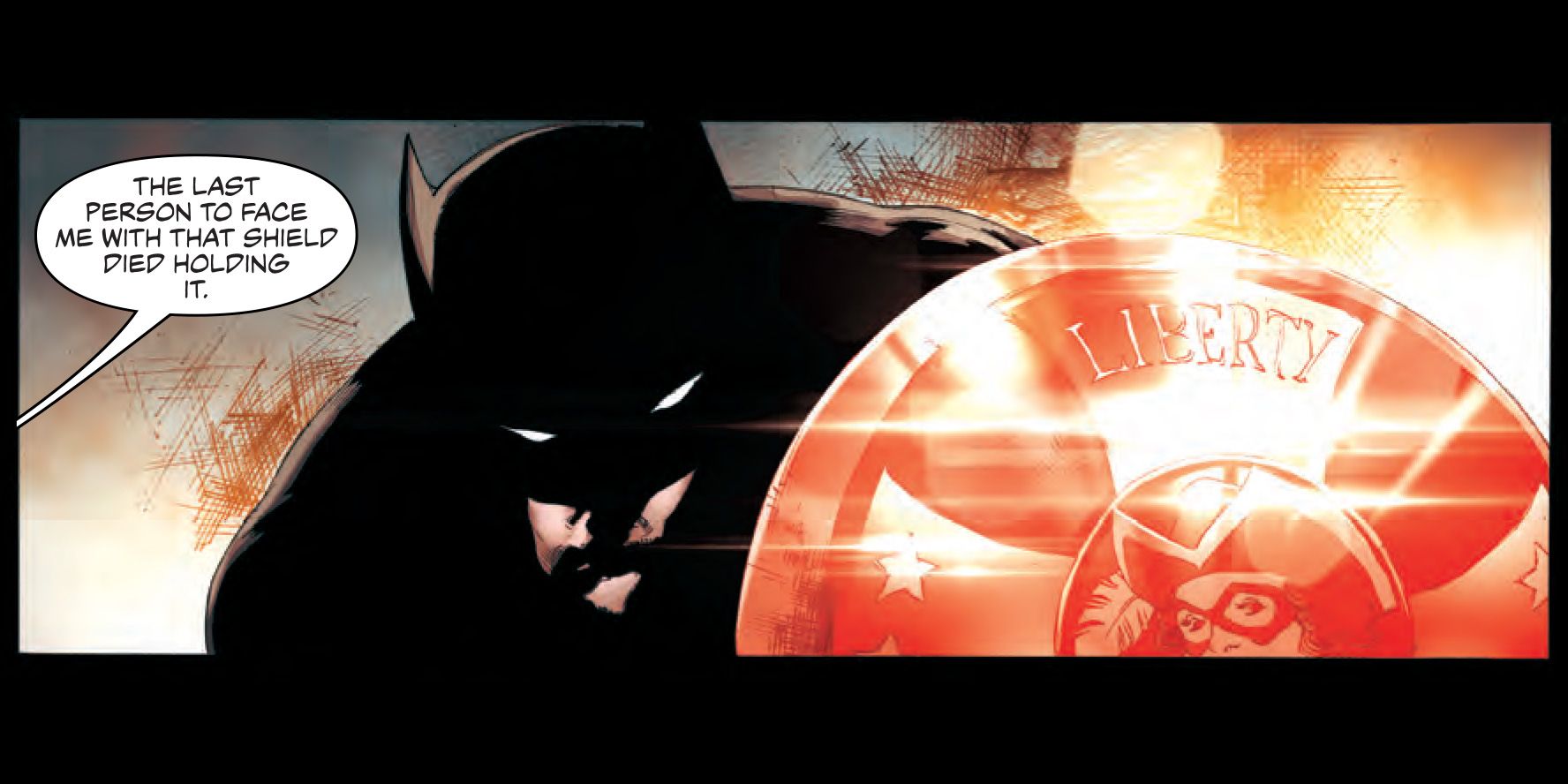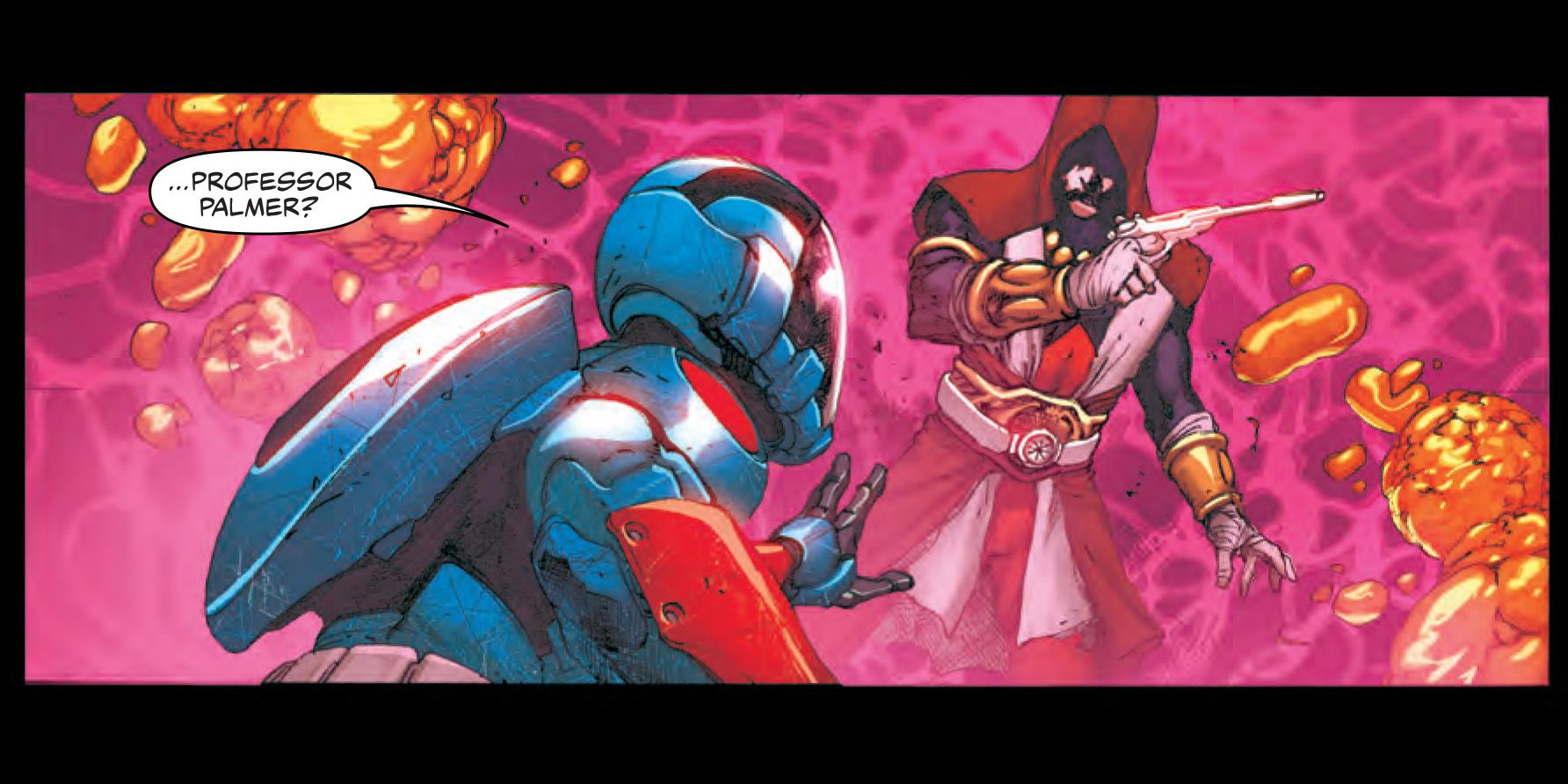SPOILER WARNING: The following article contains major spoilers for "Justice League of America: Rebirth," in stores now.
"Justice League of America: Rebirth" #1 features the formation of this latest incarnation of DC Comics' most prominent super-team: the Justice League of America. Not to be confused with "Justice League" also being published, this version of the JLA's line-up was publicized well in advance: Batman, Black Canary, the Atom, Vixen, the Ray, Killer Frost, and Lobo.
RELATED: DC Comics Has Solved Its Multiple Lobos Problem — For Now
But while Steve Orlando, Ivan Reis, Joe Prado and Oclair Albert's basic introduction is fairly straightforward, with a few exceptions, the title also provides glimpses into what's ahead for these characters in the months ahead.
MORTALS, NOT GODS
Grant Morrison and Howard Porter's "JLA" in the late '90s made its inspiration very clear: The JLA was portrayed as the DC Universe equivalent of the Greek god pantheon of Mount Olympus. Morrison took that analogy to an extreme, directly connecting each member of its line-up to one of those deities. While no other version of the Justice League has been quite as blatant, the overall idea of the Justice League being composed of god-like heroes has stuck since then, a strong contrast to the B- and C-level heroes that populated the team prior to that revamp.
Here, Orlando is openly repudiating that idea to give a core reason for this version of the Justice League of America to exist. "I've started something new," Batman explains. "A different team. Mortal. Not gods." It's an immediate contrast to the line-up in "Justice League" with the characters operating on a slightly different level. Later, Batman clarifies that the world needs, "heroes they can know [...] to inspire them, show them they can be heroes." It's lining up directly with the initial statements surrounding "DC Universe: Rebirth" #1, with the emphasis on hope within the DC Universe. What better way to inspire hope in the general population than to remind them that they, too, can be heroes?
Almost certainly connected to the idea of a less godly, more everyday Justice League is that this team is headquartered out of a cave in Happy Harbor, Rhode Island. That was the original location for the Justice League back in 1960 (their "Secret Sanctuary"), when the team was a bit more low-level. Interestingly, Orlando and Reis make it clear that this was at one point a team headquarters as well, with old staircases, computers, and the like already within its depths. Batman says that it's been his for a long time, and calls it, "a remnant of a bygone era." With the New 52's Justice League team having only formed in the recent past, is this another hint of the pre-"Flashpoint" timeline seeping into the current reality?
TEASING THE FUTURE
A currently-popular story structure when launching a new superhero comic is to reserve the last page of the comic to show the audience planned stories for the series. Orlando and Reis give us just that, with four panels showing, presumably, four different stories to come. And while the panels may seems lightly oblique, there is at least some hints that can be gleaned from them.
The first panel gives Lobo and the Ray in battle; as the Ray stabs Lobo through the chest, Lobo's shouting, "Come on, ya bright bastich! Gimme yer best!" It's clearly meant to imply that at some point that Lobo -- already a slightly untrustworthy member of the team -- goes bad.
But is that really what we're seeing here? When Lobo and Batman visit the Atom, it's worth noting that Batman is the one ready to dismiss Ryan Choi out of hand on behalf of being Ray Palmer's teaching assistant. On the other hand, Lobo is the one recognizing the Atom's scientific brilliance, first fiddling with one of the pieces of technology in the lab, then being impressed with the formulas written on a board by Ryan and noting that it, "ain't bad work... fer a human." This incarnation of Lobo isn't a moronic space-biker. He's got attitude, sure, but there's intelligence there as well. Could this scene really be a moment where Lobo is deliberately asking Ray to stab him, perhaps as a training sequence, or to exorcise some sort of control or possession? And if the latter, who better for the Ray's powers to work upon than the ultimate villain behind Lobo's return in "Justice League vs. Suicide Squad," aka Eclipso, with a power that depends on darkness?
The second panel gives us Killer Frost in some sort of ancient ruin, while a mostly-unseen figure warns her that Frost's life, "hangs on an impossible choice." All we can see of the speaker is a human hand, part of what appears to be red robes, and a few links of chain. The speaker calls Frost a "sister," heavily implying that the speaker is female. But beyond that, who could it be?
One possibility could be Pandora, the character who wore reddish-purple robes and was central to the early days of the New 52, as well as being associated with old Greek mythology. That said, with Pandora's disintegration within the pages of "DC Universe: Rebirth" #1, chances are high that DC Comics isn't ready to bring back an ultimately failed character concept.
If we stick with the idea of the ruins hinting at mythology, this could also be a reincarnation of the Greek Fates; they were destroyed during the Meredith Finch and David Finch run on "Wonder Woman" with their powers given to Donna Troy, but considering how much of both Wonder Woman and Donna Troy's current history is being rewritten, anything's up for grabs. The dialogue certainly leans towards a character that can sense the future, after all.
The third panel features Batman holding a shield with the word "Liberty" at the top, five-pointed stars on either side, and what appears to be a cross insignia. It's hard to tell if the center is a reflection of the person talking to Batman, or merely a glyph of someone with an old-fashioned revolutionary-era hat (complete with feather) and a domino mask. It would be easy to assume it's the speaker, but the dialogue makes that less than certain. Whoever used the shield beforehand died in the process, while going up against Batman's foe.
Add in the old-fashioned nature of the shield, and the fact that in "DC Universe: Rebirth" #1 we got blatant hints that the Justice Society of America will be re-entering DC Comics continuity, and we wonder if this could be a relic from the early days of the JSA. If so, the original owner's face might be engraved on the center of the shield. Add in the word "liberty" and it could be more than just a nod towards the United States; perhaps it was once owned by a JSA-era Liberty Belle? The original version of the character was created back in 1942, and while she was part of the All-Star Squadron, there's no reason why she couldn't retroactively be added into the new Justice Society, especially since the two teams have shared members over the years.
The fourth and final panel in many ways feels the easiest to parse, as Ryan Choi appears to have finally found the missing Ray Palmer. (Of course, since the person in question's face is hidden, we can't be certain that Ryan Choi's statement is correct.)
What's interesting here is how Ray Palmer is dressed. With a hood and doublet over what appears to be some sort of armor and metal cuffs, while wielding a slender looking gun, Ray Palmer looks more at home in the days of the Three Musketeers rather than the modern era. It's hard to keep from thinking about the Jan Strnad and Gil Kane "Sword of the Atom" comics, which plunged the character into a setting more in line with "Conan" comic books than typical superheroes. Wherever Ray Palmer is trapped this time, chances are now high it won't look like the world outside our window.
With "Justice League of America" #1 arriving in stores later this month, we hopefully won't have long for the future to become the present. In the meantime, Orlando and Reis are deliberately teasing readers on what the future might be. Let the speculation begin!

